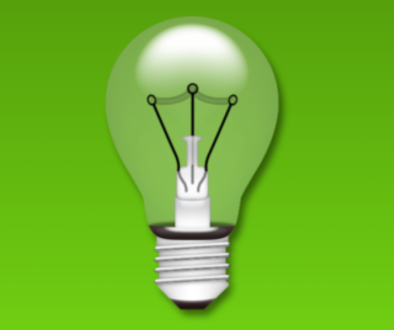Day 3: Client installation on Windows and Apple computers
Now that our server is up and running, we will connect client computers to the server. This is done by a client installation. Lights-Out requires a client software package to control and monitor client computers. The required installers can now be downloaded from our server.
Downloading installers
Open your browser of choice and navigate to http://server:7782. You will see the Lights-Out start page, click on “Download installers” to access the download page.


Client installation on a Windows Computer
Click on “Windows” to download the client installer. Save and execute the file.
The installer works very similar to the server installer. You see a loading dialog, a language selection and then the installer progress. Again nothing special so far.
At the end of the client installation however, the connection to the server requires manual configuration.
Connecting to the server
The server discovery starts. Typically you will see your server(s) in the first selection. Here is our S2016 again:

If you do not see the server, i.e. the first entry is empty, click on “Type server name..” and enter the server name or the server IP-Address.
If you want to access the server from outside of your local network, be sure to enter the external DDNS name:

Now click on “Connect”. You have to enter server credentials (unless the client is joined to a domain and you are logged on as domain admin).
Addendum 19.12.2016:
If you run your server with a Microsoft Account, you should use the mapped short user name here. To see the mapped name, open Lights-Out Console, Settings, Users. If you connect to a server with Active Directory, you may have to use the format DOMAIN\admin as user name.

If the connect was successful, the window is closed and you see the last dialog of the installer. Click “Finish” to close the installation.

A few seconds later, the bulb should appear in the tray:
![]()
That’s it, the first client is now connected to the server.
Client installation on an Apple Mac Computer
Again, open your browser of choice and navigate to http://server:7782. click on “Download installers” and the download the Mac installer. Run it.

Click Continue and Install



Now a new icon is visible on top:
![]()
Click on the bulb and select preferences:

Enter your server NETBIOS name and optionally your external domain name. Add :7784 to the external name:

Click on “Test Connection”. Done.
Summary
Today we connected different types of client computers to our server. Now we have our first working system. In the next parts of this series we will explore what we can do with it. For more background information have a look at the manual.
Here you will find the complete list of all days of our step-by-step series.


January 26, 2017 @ 3:13 pm
I installed this version and it is asking me to buy a new license. Is this correct?
January 26, 2017 @ 5:48 pm
Hi Jon, probably yes.
You should have a 30 day trial license after installation.
You can’t use an existing 1.6 license. 2.0 is a major release and requires a new license.
See day 29 and 30 of the blog series.
January 14, 2018 @ 9:12 pm
When I run the client installer on Windows 10 I get the message “The service cannot be started, either because it is disabled or because it has no enabled devices associated with it”. What does this mean?
January 15, 2018 @ 7:52 am
Paul, please restart the computer and try again. Should the issue persist, then please open a ticket here /osticket/
Regards
Martin
April 11, 2019 @ 10:27 pm
Hi Martin,
This is a great program! I’m setting up a home server with Windows 2012 R2 essentials installed. The question is whether LightsOut2 will work on a client (Windows 10 Pro PC) that has skipped the domain join protocol and joined the server as part of the homegroup?
LightsOut2 installed on the server without a hitch. The problem started when I tried to access the client installation software from the server. That didn’t work so I created a preconfigured client package which I was able to install. That’s as far as I got. What I’m seeing is a ? in the light-bulb. Apparently that means it can client can’t find the server although, I’ve tried signing in as administrator as well as a standard user and in both cases have access to the server file folders.
I’m beginning to think that LightsOut2 won’t work on a client that isn’t part of the domain.
Thanks so much.
Ken
April 12, 2019 @ 10:06 am
Hi Ken,
it does not matter if the client is domain joined or not.
If you can’t open the download page on http://your-server-name-here:7782, then a client connection will also fail.
Please check if your server network is set to a domain or private network. It does not work if it’s a public network because the firewall blocks the connection for public networks. Go to “Network and sharing center” to verify.
If that does not help, then please open a ticket and attach your server log files. Simply zip the whole folder c:\programdata\LightsOut2\Logs (via right click, send to compressed folder) and attach the archive to the ticket. If you do not see a folder c:\programdata, then open explorer options and enable “show hidden files and folders”.
Regards
Martin
April 17, 2019 @ 8:03 pm
Hey Martin,
Problem solved! As you suggested, the network was set to public. After I changed the startup of Network Location Awareness service to Delayed Start the network was reset to Domain.
I’ve run Lights-Out2 on my (home) Windows Server 2012 R2 for a week and the WOL and backups have worked flawlessly.
I really appreciate the technical assistance even though I was using Lights-Out on a 30 day trial.
Now that I know it works with my new server I’ve bought the home license.
Regards,
Ken
September 13, 2020 @ 10:29 pm
I moved my server from windows 10 to windows server 2019 essentials and now I can’t connect to the server even to download the client. I tried manual install and it says can’t find package. I can connect to server folders and I can remote desktop but no connection to server. Any ideas?
September 14, 2020 @ 9:18 am
Frank, please open a ticket here https://osticket.green-it-software.com/. That makes it a lot easier to share log files and to fix the issue.
Regards
Martin